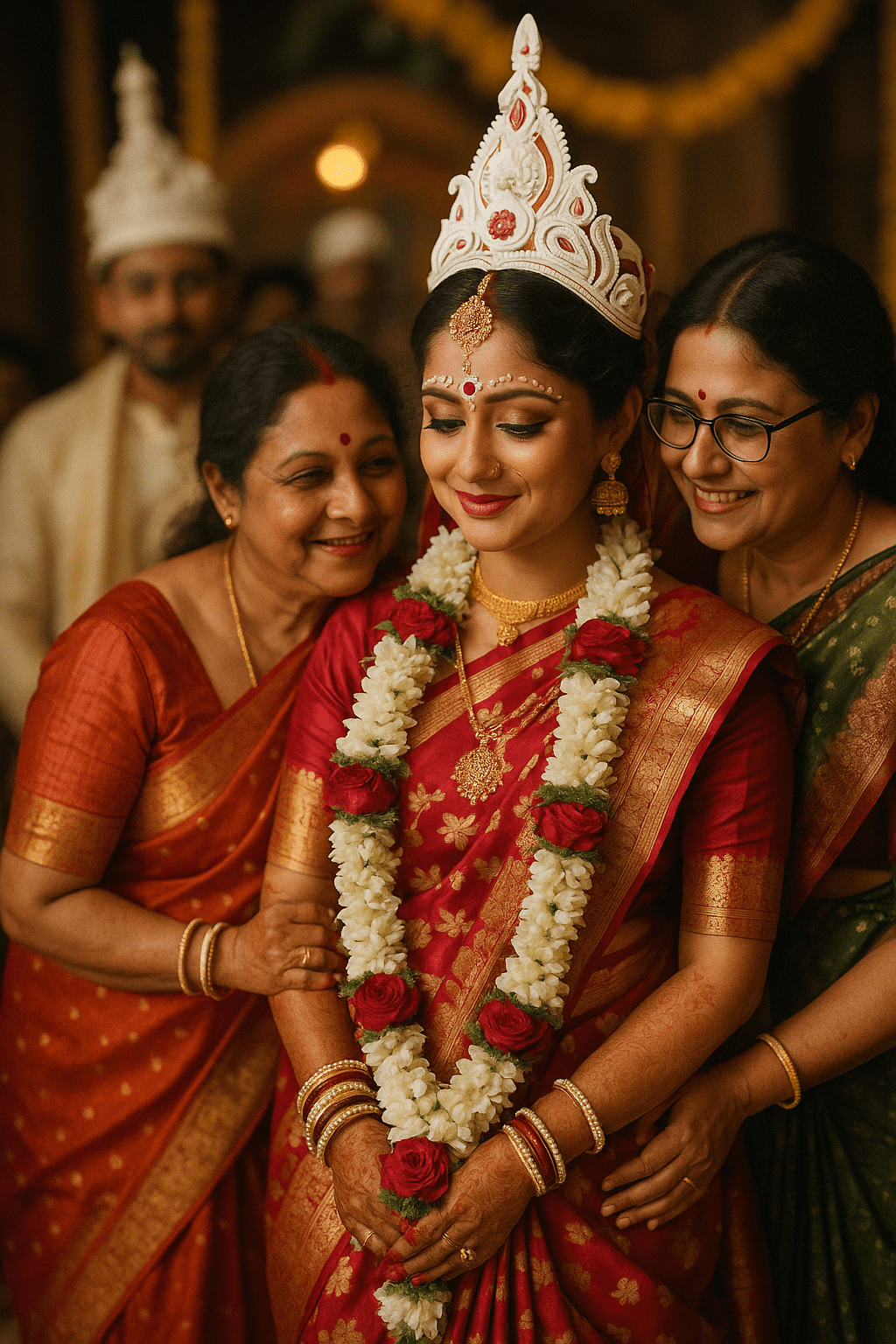
In the realm of Indian bridal attire, the Benarasi saree holds a place of unmatched elegance and timeless beauty. Originating from the holy city of Varanasi, also known as Benaras, these sarees are renowned for their opulent weaves, intricate designs, and luxurious feel. Beyond their aesthetic allure, Benarasi sarees carry profound sentimental and cultural significance, often being passed down through generations as treasured family heirlooms. Wearing a Benarasi saree on a special occasion not only showcases its splendor but also revives cherished memories of the loved ones who adorned it on their special day.
Benarasi sarees are distinguished by their rich texture and elaborate motifs, often woven with gold and silver zari threads. The fabric is usually made from finely woven silk, which gives the saree its characteristic sheen and drape. Traditional designs often feature intricate patterns inspired by Mughal art, such as floral motifs, paisleys, and lattice work. The pallu, or the decorative end piece of the saree, is particularly elaborate, showcasing the weaver’s exceptional craftsmanship.
The art of weaving Benarasi sarees dates back several centuries, with its roots deeply embedded in the cultural tapestry of India. The weaving process is labor-intensive and requires immense skill and precision. Each saree can take anywhere from a few weeks to several months to complete, depending on the complexity of the design. The weavers of Varanasi, many of whom have inherited their craft through generations, continue to uphold this tradition, infusing each saree with a legacy of dedication and artistry.
For many Indian brides, the Benarasi saree is a quintessential part of their wedding trousseau. The richness of the fabric and the elegance of the design make it an ideal choice for such a momentous occasion. Adorning a Benarasi saree on one’s wedding day is not just about looking beautiful; it is about embracing a piece of cultural heritage and honoring the timeless traditions that have been passed down through the ages.
One of the most endearing aspects of a Benarasi saree is its role as a family heirloom. Passed down from mother to daughter, or grandmother to granddaughter, these sarees become a repository of family history and memories. Wearing an heirloom Benarasi saree on a special occasion, such as a wedding, is a deeply nostalgic experience. It connects the wearer to the lineage of women who have worn it before, each adding their own chapter to the saree’s story.
Imagine a bride draping herself in the same Benarasi saree her mother wore on her wedding day. The fabric, though aged, still retains its luster and elegance, evoking memories of the past. The bride feels a deep connection to her mother, remembering the stories shared about her wedding day, the emotions she felt, and the dreams she cherished. The saree, in this sense, becomes more than just an article of clothing; it becomes a symbol of continuity, love, and familial bonds.
The act of wearing a Benarasi saree steeped in family history brings a profound sense of reverence and nostalgia. It is a moment of reflection, where one can feel the presence of the loved ones who wore it before, their blessings woven into the fabric. The saree carries the laughter, the tears, and the myriad emotions of the previous generations, enveloping the wearer in a tapestry of familial love and tradition.
The timeless beauty of a wedding Benarasi saree lies not only in its luxurious fabric and intricate designs but also in its deep cultural and emotional significance. As an heirloom, it transcends generations, embodying the memories, traditions, and values of the family. Wearing a Benarasi saree on a special occasion is a tribute to this enduring legacy, a celebration of the past, and a promise to carry forward the heritage with grace and pride. In every fold of the saree, one finds a story, a memory, and a piece of history, making it a true treasure in the tapestry of life.